Belize Students Going Global: Day 5 - Wildlife and Transportation
Today is a day for wildlife and transportation. We started our morning with a lovely breakfast of scrambled eggs, French toast and delicious pastries.
Today is a day for wildlife and transportation. We started our morning with a lovely breakfast of scrambled eggs, French toast and delicious pastries.
From our hotel we traveled about an hour to get to the Belize City Zoo. Along the way we were given an introduction to Ambergris Caye, the islands where we will be for the next three evenings. I was very impressed with a couple of kiddos today! The first question posed to the group by our tour guide was where does Ambergris Caye get its name? Lily shoots her hand up and responds “It’s a whale’s insides!” Ken respondes with, “Why yes actually, although I find very few people that know that. Ambergris is actually whale vomit that is very expensive.” They use the ambergris to make scents and perfumes. Way to go Lily! The second moment came when Ken asked the bus, what makes the beautiful white sandy beaches. Immediately after the question was asked, Brynn yells out “FISH POOP”! I think I brought a couple of marine biologists on tour. I had no idea what the answers to these questions were! Teachers are learning all the time. They were both correct, and both facts make you think about lying out on the beautiful white beach (fish poop calcium deposits) and something interesting washes up beside you...
Bus rides are question time. I let the kids know that if they have a question, they need to ask. They may never have the chance to talk to a Belizean expert again. On this ride they asked why so many houses seemed started and not completed. This occurs because people save up enough to build a section and then continue saving until they have enough for the next section to avoid borrowing money or taking out a bank loan. If you are wondering why they would do that...it is because of a 16% interest rate on a home loan. Talk about a reason to save first!
We arrived at the zoo around 9, applied bug spray and sunscreen, and purchased tickets for extra opportunities. The Belize Zoo is made up of acres of tropical forests and minimal concrete to preserve the natural habitats of the animals. It was opened 1983 and has worked really hard to help with the conservation of wildlife in Belize. With the help of signs and our guide, the kids learned a lot about many different types of animals.
The scarlet macaw is red and represents rebirth and fertility to the local culture. It is currently endangered due to poaching and those who keep the macaw as pets in the animal trade. The macaw is having a hard time getting off of the endangered list because they only have 1-2 chicks every two to three years and they are threatened with the aforementioned activities.
After the macaw, students were able to see a king vulture a boa constrictor, which many of them held, and a quepac tree, an ancient tree of the Mayans. This tree had cardinal buttress roots and spines to protect it.
Students also learned that the parrot mating seasons coincide with rain and mango seasons so that when they have their babies, they are assured that food is available. These birds are also birds that can be known to mimic people.
Students also learned that the parrot mating seasons coincide with rain and mango seasons so that when they have their babies, they are assured that food is available. These birds are also birds that can be known to mimic people.
We saw two types of owls. Owls in Belize and elsewhere are very important to the ecosystem as they help to get rid of pests and by doing this, they help prevent diseases. The owls were asleep as we walked by because these animals are nocturnal.
One of the largest highlights for the students at the zoo was the ability to see a jaguar up close. The zoo felt extremely safe here, but the distance between the kids and the animals and the amount of protection in the middle was a lot smaller. This allowed us to see a lot better than in some U.S. zoos, but it also required a level of higher maturity and trust. If you stuck a finger or hand through a fence, a parrot would probably take it off. If you climbed on a short fence and fell, you would probably be face to face with a crocodile. The jaguar was laying in the shade resting when we walked by. He has a very interesting story that really highlights the zoo's mission. The zoo really wants to decrease the hunting of these exotic animals. Humans have harmed and hunted the animals when they interfere with their crops or herds. The zoo now takes phone calls any time anyone has an issue with an animal and they will come out and help to save the animal. Many members of the local Mennonite community called the zoo to report something attacking their herds. By calling the zoo hotline, they were able to retrieve and save the jaguar. It turns out that the jaguar they retrieved was pregnant and gave birth to a baby three days later! This is the baby we saw and he is now twelve years old! Mom's name was Springfield because this is the name of the community where he was saved and the young jaguar's name is Buddy. Buddy was bottle fed from birth because he was born in captivity and is now friends with all of the zookeepers.
The next animal that we saw were several crocodiles. They are crocodiles because alligators are not a species of Belize. I could not believe how close we were to these massive creatures.
This next tree is known as the lobster tree because its leaves are shaped like the claws of a lobster! This is also the tree that us used to wrap tamales!
Have you seen the movie Storks? There is a reason why we believe that storks can deliver babies to rooftops! They are on average five feet tall and have a wingspan of over 12 feet! They are huge! They do not have a birdsong like many other species, but instead they clap their beaks.
Here is an image of wild ginger. The zoo not only had plenty of animals, but they also had many different types of plants to look at! Anyone up for sushi?
Next we saw howler monkeys. These howler monkeys eat lots of plants, not fruits, and need to conserve energy. They also have a prehensile tail can hold all of their body weight and includes a marking that is similar to our fingerprints. This tail helps them climb, as well as the fact that their 5 fingers are split into 3-2 instead of 4-1 to help them grip the trees while running! In troops of 6-8, these monkeys chill for over 20 hours a day and are led by an alpha-male. They howl as a warning sign and to lay claim on their grounds. These monkeys became endangered due to yellow fever in the seventies.
This is an image of a Picardy. They are similar to warthogs. Make sure that you don't stand behind them and run if they turn their back to you. They give off a smell that is used to warn and communicate a message to you!
The national animal of Belize is the tapir. The tapir have been hunted in the past. The Mayans used their skin for leather and meat for protein. These animals like the water and are now protected. One of the "encounters" that we were able to pay extra for was to feed the tapir. They brought our a bucket of carrots and many students took part in this activity. The mom Tapir's name is Navidad because she was found on Christmas. The dad tapir's name is Fuego because he was rescued from a forest fire. Navidad and Fuego became great friends and thus we ended up with the ability to meet Sparks. The students loved these adorable names! We also were going to attempt the jaguar encounter but the Discovery Channel was there right before us making a documentary and they had used up the jaguar's time for the day. We definitely didn't want to risk encountering a tired and grumpy jaguar.
The white tail deer is a common animal in Belize. This is a white tailed deer that has had hormonal imbalances with the castration process (this is an explanation for the way the antlers look). Did I mention that they peer pressured me into holding the boa constrictor as well?
We ate lunch at the zoo. The zoo offered my kids 6 different options to choose from and it was wonderful food! Although there were options for hamburgers and hot dogs, all students tried to step outside of the norm and try something different. The next stop was to get to Ambergris Caye for our 3 day adventure on the island. On the way there we had a bus ride, a water taxi and a land taxi. O n the bus ride we discussed the cemeteries and why some locations have their graves above land (sea level - we do the same thing in the United States in places like New Orleans), and also said goodbye to our bus driver Modesto! Modesto had been with us since the airport on day one, but on the island all transportation is by means of taxi, bike or golf cart. We might see him again on our final day to travel home!
Here is your daily dose of fun student quotes:
1. My dad is good at eating, but he’s so small.
2. My whole family hasn’t responded to my texts saying that we arrived in Belize...still.
3. Space camp isn’t working. I have no idea what these constellations are.
4. The jaguar reminds me of my dog.
5. If I can do it, you toucan.
6. Mrs. Potter, we planned your vowel renewal attire.
7. We are really behind. Everyone here speaks so many languages... why do we have such an attitude about only knowing one?
(This last quote is a beautiful question and a verification of one of the many reasons why these trips are so important to me. We are not the only people on the planet. There is a world to discover and thoughts to ponder!)




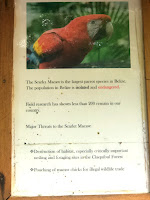

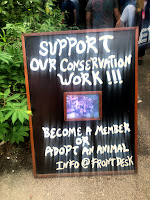








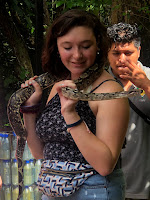
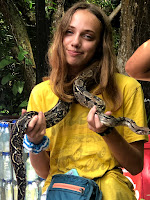














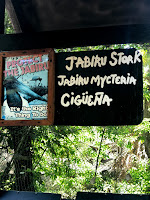
















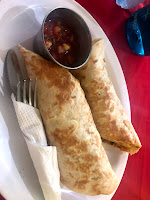









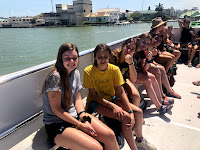
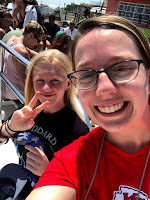



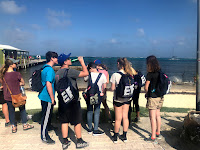


No comments:
Post a Comment